Cats come in a wide variety of colors, patterns, and breeds. In fact, The International Cat Association (TICA) currently recognizes 73 distinct breeds.
While you’re probably familiar with some of the most common breeds like the American Shorthair or the Maine Coon, there’s a whole world of rare cat breeds out there waiting for you to discover. Some of these cats have odd anatomical features that set them apart while others are simply newer breeds that have yet to go mainstream.
Let’s take a look at 29 of the rarest cat breeds and species around the world. Maybe you’ll learn something new!
#1 American Bobtail
American Bobtail – Very cute and unique because of their bobbed tails, American Bobtails are a definite eye-catcher. The American Bobtail cat is the result of a genetic mutation that affects tail development.
These cats are slow to develop, taking two to three years to develop, and they often retain their kitten-like energy and personality into adulthood.
#2 American Curl
American Curl – Named for their unique ear shape, the American Curl has curled ears. If you are an owner of such a cat, you have to pay special attention not to damage the delicate cartilage in their ears.
These are playful, social cats that come in a wide range of colors and patterns. American Curls typically have short hair but there is a long-haired version as well.
#3 Balinese
Balinese – These cats are very similar to the beloved Siamese cats, with the only difference being that the Balinese cats have somewhat longer hair.
In fact, they are sometimes referred to as purebred long-haired Siamese cats. The Balinese is a social, playful, and vocal breed.
#4 Bombay
Bombay –Bombay cats look like mini versions of a panther. Totally black and very beautiful, these cats are easily trained. Unlike their wild lookalikes, the Bombay cat breed is very loving and affectionate.
The Bombay is a short-haired breed created by crossing a sable Burmese with a black American Shorthair.
#5 Burmilla
Burmilla – What would happen if a Burmese cat and a chinchilla mated? That’s not actually how this breed came to be, but that’s what they look like.
Derived from a crossing between a Chinchilla Persian and a Burmese, the Burmilla is gentle, affectionate, and intelligent. Even though the Burmilla cat breed is strangely unique and somewhat bizarre, the results couldn’t have been any cuter.
#6 Chartreux
Chartreux – An old breed, the Chartreux was developed in France. It is a sturdy, robust breed with a medium-length coat that comes only in blue and has a wooly texture.
The undercoat is soft and warm while the outer coat is water-repellent. These cats have round heads that taper toward the muzzle, giving the cat the appearance of a perpetual smile.
#7 Clouded Leopard
Breed Overview
- ORIGIN: China
- ADULT WEIGHT: 25-50 pounds (11-23 kg)
- GROUP: Medium to large shorthair
- HEIGHT: 20-22 inches (51-56 cm)
- LIFE SPAN: 11-17 years in captivity
- PRICE: Not typically available for purchase (endangered and protected species)
Clouded Leopard – Similar in appearance to other leopards, clouded leopards are considered to be the link between small and large cats in the wilderness.
They are very beautiful, having a dusky gray color with irregular spots and blotches all over their coats. These cats rest in the trees by day and hunt the forest floor at night.
#8 Cornish Rex
Cornish Rex – Known for their outgoing personalities, Cornish Rex cats are incredibly social. What really makes these cats unique, however, is their coats.
The Cornish Rex’s coat sits in tight waves against the skin, giving it a washboard-like appearance.
#9 Devon Rex
Devon Rex – Similar in appearance to the Cornish Rex, this cat breed has a short, velvety coat rippled with waves. They are a smaller breed, but they have big, mischievous personalities.
Despite the unique appearance of their coats, the Devon Rex is actually a fairly low-maintenance breed in terms of grooming.
#10 Egyptian Mau
Egyptian Mau – With fewer than 7,000 registered with the Cat Fanciers’ Association (CFA), the Egyptian Mau is a very rare breed. What makes this breed unique is that they are one of the few domestic cat breeds with naturally occurring spots.
Egyptian Maus are considered one of the progenitors of the modern domestic cat and they come in six colors. They have playful, active personalities and they are one of the fastest cat breeds with recorded speeds up to 30mph.
#11 Flat-Headed Cat
Breed Overview
- ORIGIN: Thai-Malay Peninsula
- ADULT WEIGHT: 4-8 pounds (1.8-3.6 kg)
- GROUP: Small to medium shorthair
- HEIGHT: 10-12 inches (25-30 cm)
- LIFE SPAN: 12-14 years in captivity
- PRICE: Not available for purchase; considered a vulnerable species in need of conservation efforts
Flat-headed cat – Scientists are still trying to determine the exact number of the representatives of this breed, as they were considered almost extinct for a very long time.
Fun fact: these cats are good at fishing and hunting in rivers and wash their food before they eat it!
#12 Havana Brown
Havana Brown – Very outgoing, these cats are special because their breed is single-colored. Even though this breed lost a big portion of its “overall hardiness” by the ‘90s, scientists and breeders made a plan to preserve this breed, so its numbers rebounded since the 2000s.
#13 Khao Manee
Breed Overview
- ORIGIN: Thailand
- ADULT WEIGHT: 6-10 pounds (2.7-4.5 kg)
- GROUP: Small to medium shorthair
- HEIGHT: 8-10 inches (20-25 cm)
- LIFE SPAN: 12-15 years
- PRICE: $1,000 – $3,000
Khao Manee – The khao manee has either blue or gold eyes (sometimes the combination of the two) and is one of the rarest cat breeds in the world. Because of their unique eyes, they are also known as the Diamond Eye Cat. This breed of cat is curious and intelligent and loves a good game of fetch.
#14 Kodkod
Image Credit: https://en.wikipedia.org/wiki/Kodkod
Breed Overview
- ORIGIN: Chile
- ADULT WEIGHT: 4-6 pounds (1.8-2.7 kg).
- GROUP: Small Shorthair
- HEIGHT: 10-12 inches (25-30 cm).
- LIFE SPAN: 10-12 years in the wild.
- PRICE: Not available for purchase; considered a vulnerable species and protected by conservation efforts.
Kodkod – These small-headed cuties primarily live in Chile and Argentina. They are very good climbers and due to their strength they can climb trees very successfully. They are sometimes called “vampire cats” because they leave two bite marks on their prey.
#15 Korat
Korat – Korats are one of the oldest and rarest cats in the world. They were also quite rare in the 14th century when they were given only to the members of the Thai government, while others lived in monasteries in Siam.
The Korat cat is sometimes referred to as the Si-Sawat and is thought to bring good luck.
#16 Kurilian Bobtail
Kurilian Bobtail – Developed in Russia, the Kurilian Bobtail is rarely seen in the United States. In fact, TICA registration statistics suggest there are fewer than 100 of them in the U.S.
These medium-sized cats are highly intelligent and inquisitive, but their defining feature is their stubby, pom-pom-like tail. Every Kurilian Bobtail’s tail is unique, containing anywhere from 2 to 10 vertebrae kinked in various directions.
#17 LaPerm
LaPerm – Perhaps not the rarest, but definitely some of the most unique cats out there, the LaPerm has very odd fur. As the name suggests, these cats look like they have just gotten a perm.
Their coat comes in many colors, and they are often considered to be hypoallergenic because they shed very little.
#18 Margay
Breed Overview
- ORIGIN: Central and South America
- ADULT WEIGHT: 6 to 9 pounds (2.7 to 4 kg).
- GROUP: Small to medium shorthair
- HEIGHT: 18-20 inches (45-50 cm).
- LIFE SPAN: 12-15 years in the wild.
- PRICE: Not available for purchase; protected species due to conservation concerns.
Margay – This wild cat species can jump from one branch to another and climb down a tree like a squirrel. Thanks to their strong legs, they can even hang from the trees with their heads down.
Native to Central and South America, these cats have become increasingly rare due to hunting and habitat destruction.
#19 Minskin
Image Credit: https://www.worldlifeexpectancy.com/cat-life-expectancy-minskin
Breed Overview
- ORIGIN: United States
- ADULT WEIGHT: 4-6 pounds (1.8-2.7 kg)
- GROUP: Small Short to medium hair
- HEIGHT: 7-9 inches (18-23 cm)
- LIFE SPAN: 12-15 years
- PRICE: $300 – $1,500
Minskin – One of the newer cat breeds on this list, the Minskin was only recognized by the International Cat Association in 2008. It was developed by crossing the hairless Sphynx with the short-legged Munchkin.Minskins are small, affectionate, and outgoing cats that can be very playful. Their coats come in many colors and have a dense, cashmere-like texture with a satin-like sheen.
#20 Norwegian Forest Cat
Norwegian Forest Cat – King of the forest, these large and muscular cats represent one of less than twenty “natural breeds” that developed over hundreds of years on their own.
The Norwegian Forest Cat, also known as the Skogkatt, is native to Scandinavia where they’ve adapted to live in harsh climates. These cats have dense undercoats with a medium-length, water-resistant coat over top and a long, flowing tail. They have large eyes and a triangle-shaped head.
#21 Oncilla
Breed Overview
- ORIGIN: South America
- ADULT WEIGHT: 3 to 9 pounds (1.4 to 4 kg).
- GROUP: Small Shorthair
- HEIGHT: 10-14 inches (25-35 cm).
- LIFE SPAN: 10-14 years in the wild.
- PRICE: Not available for purchase; considered a near-threatened species and protected by conservation efforts.
Oncilla – Also known as the little spotted cat, Oncilla is a breed that we don’t know much about. Since they are excellent at hiding, scientists rarely get the chance to observe them. They still live and hide in Brazil and Argentina.
#22 Pampas Cat
Image Credit: https://en.wikipedia.org/wiki/Pampas_cat
Breed Overview
- ORIGIN: South America
- ADULT WEIGHT: Typically between 5 to 9 pounds (2.3 to 4 kg).
- GROUP: Small to medium shorthair
- HEIGHT: Approximately 16-20 inches (40-50 cm).
- LIFE SPAN: Estimated around 12-14 years in the wild.
- PRICE: Not available for purchase; considered a near-threatened species and protected by conservation efforts.
Pampas Cat – This small wildcat is native to South America where its population is threatened by habitat destruction. Pampas cats are named after the Pampas, an area of fertile lowlands in South America, but they can be found in various habitats including grassland, shrubland, and dry forest.
#23 Peterbald
Peterbald – Developed in Russia during the 1990s, the Peterbald is similar in appearance to the Oriental Shorthair cat. Peterbalds have long, slim bodies with narrow heads, almond-shaped eyes, and wedge-shaped muzzles.
Their tails are long and whiplike and they have webbed feet with large, oval paws they can use to grasp objects. This breed is sweet and affectionate by nature which makes them great family pets.
#24 Ragamuffin
Ragamuffin – A fairly new breed of cat, Ragamuffins were registered as a breed in 2003. They are large in size, have heavy bones, and have fur as soft as a rabbit’s.
Once considered a variant of the Ragdoll cat, this breed isn’t required to exhibit pointed coloration. Ragamuffins have large, round eyes in contrast to the Ragdoll’s angled, almond-shaped eyes.
#25 Sand Cat
Image Credit: https://en.wikipedia.org/wiki/Sand_cat
Breed Overview
- ORIGIN: Middle East and Central Asia
- ADULT WEIGHT: 4 to 8 pounds (1.8 to 3.6 kg).
- GROUP: Small shorthair
- HEIGHT: 10-12 inches (25-30 cm).
- LIFE SPAN: 10-12 years in the wild.
- PRICE: Not available for purchase; considered a near-threatened species and protected by conservation efforts.
Sand cat – As the name of the breed suggests, these cats live in the sandy corners of our planet and feel most comfortable around rocky terrain. They are also known as the dune cat. Sand cats have light grey to sand-colored fur that helps them blend into their desert environment.
#26 Sokoke Forest Cat
Sokoke Forest Cat – Native to Kenya, the Sokoke Forest Cat was formerly known as the African Shorthair and it is another natural breed of domestic cat.
These cats have long legs and short, coarse hair that typically exhibits a tabby coloration. Because they have limited resistance to New World cat illnesses, they are best kept in single-cat homes.
#27 Tonkinese
Tonkinese – Developed by crossing a Siamese and Burmese, the Tonkinese is a playful cat known for its pointed coat. These cats are medium-sized but slender and their bodies are longer than average. Similar to the Siamese in personality, they are active, vocal, and very people-oriented.
#28 Turkish Van
Turkish Van – A naturally occurring breed native to the mountains of Turkey, the Turkish Van (pronounced Von) has a semi-long coat with a soft, cashmere-like texture.
These cats typically have amber or blue eyes, though they can also have one of each color. The Turkish Van is a larger breed of cat with large ears and a full brush tail.
#29 Wildcat
Breed Overview
- ORIGIN: Europe and Africa
- ADULT WEIGHT: 8 to 15 pounds (3.6 to 6.8 kg), with males usually larger than females.
- GROUP: Small to Medium shorthair
- HEIGHT: 12-16 inches (30-40 cm)
- LIFE SPAN: 10-15 years
- PRICE: Not available for purchase; considered a near-threatened species and protected by conservation efforts.
Wildcat – The name wildcat generally applies to two species: the European wildcat (Felix silvestris) and the African wildcat (Felix lybica). European wildcats have long fur and bushy tails while African wildcats have sandy-gray fur with a tapered tail.
These are just a few of the many unique and interesting cat breeds out there. Curious to learn more? Check out our index of cat breeds.
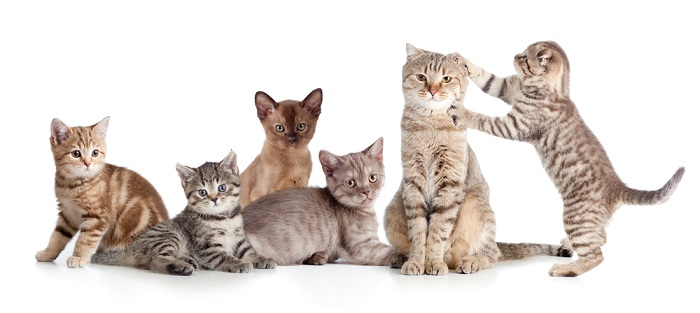
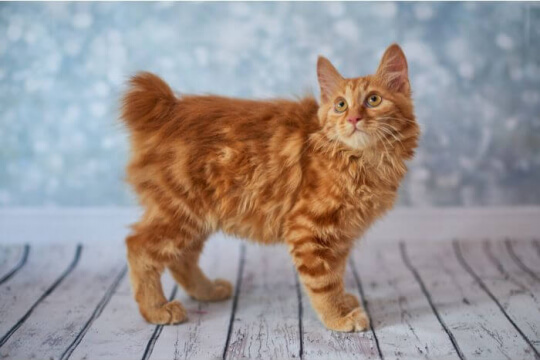
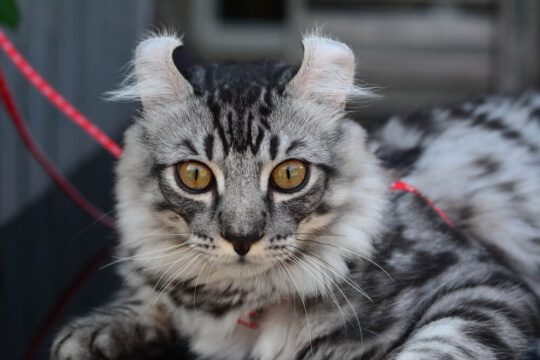
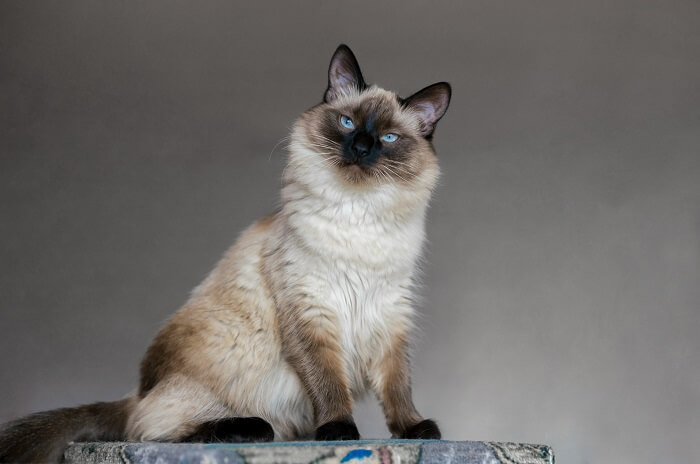
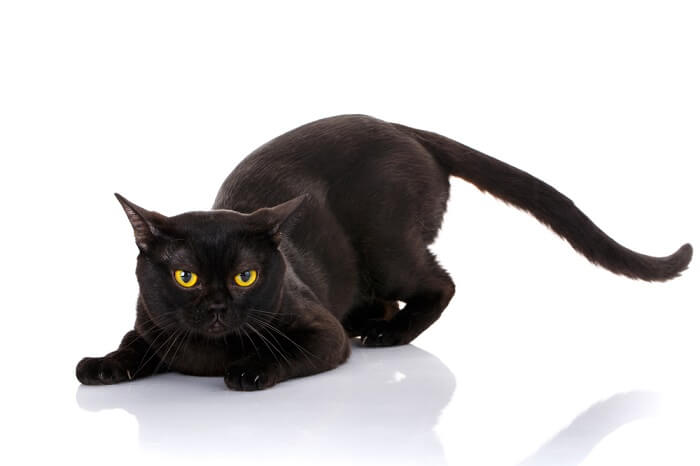
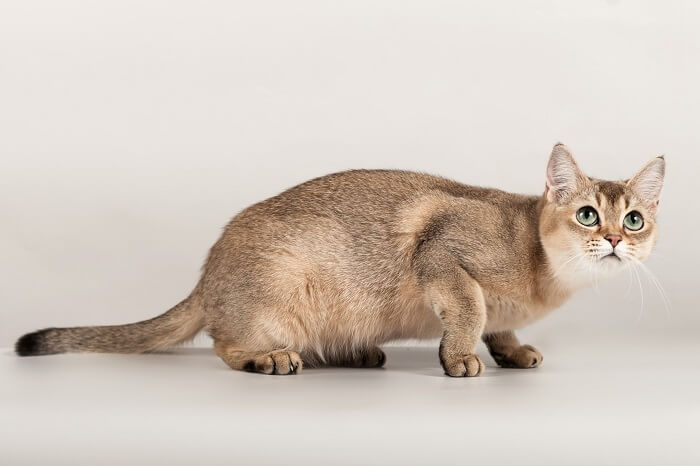
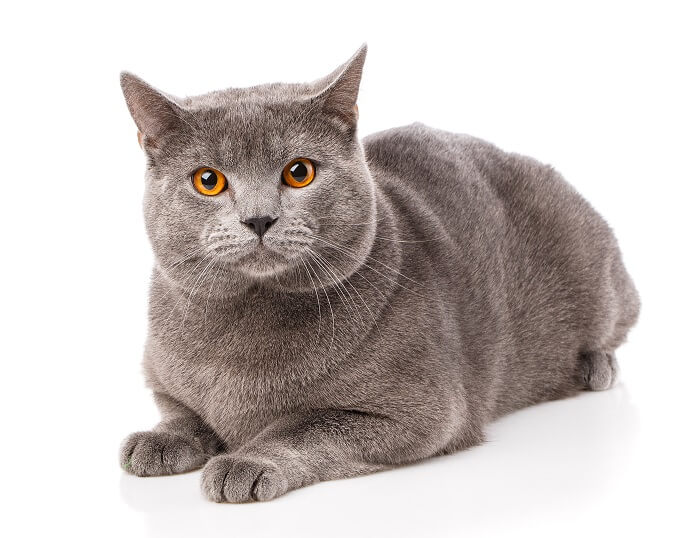
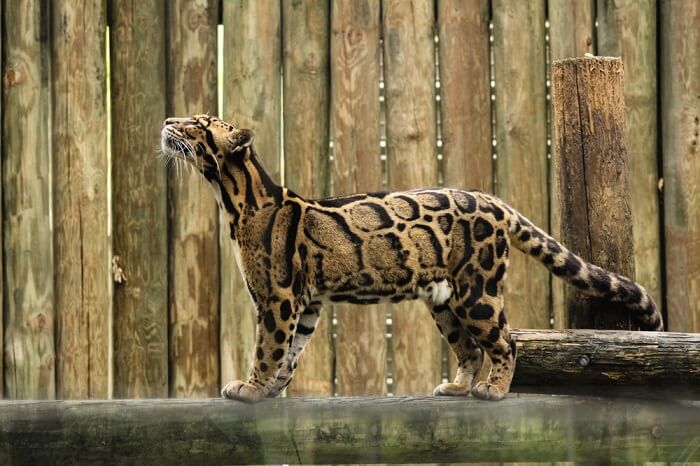
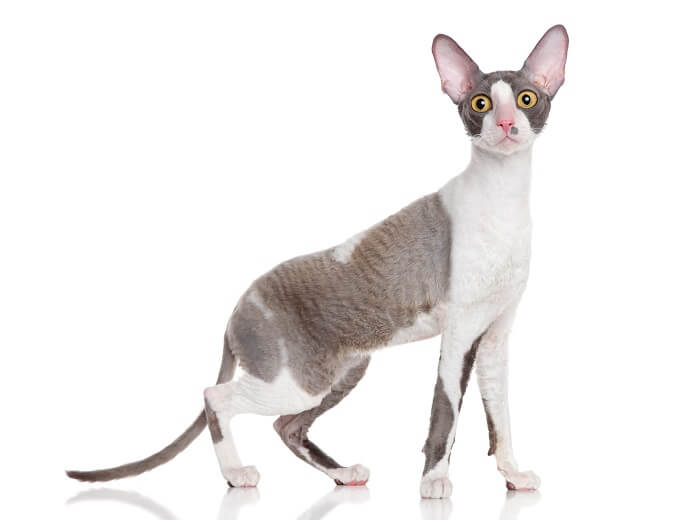
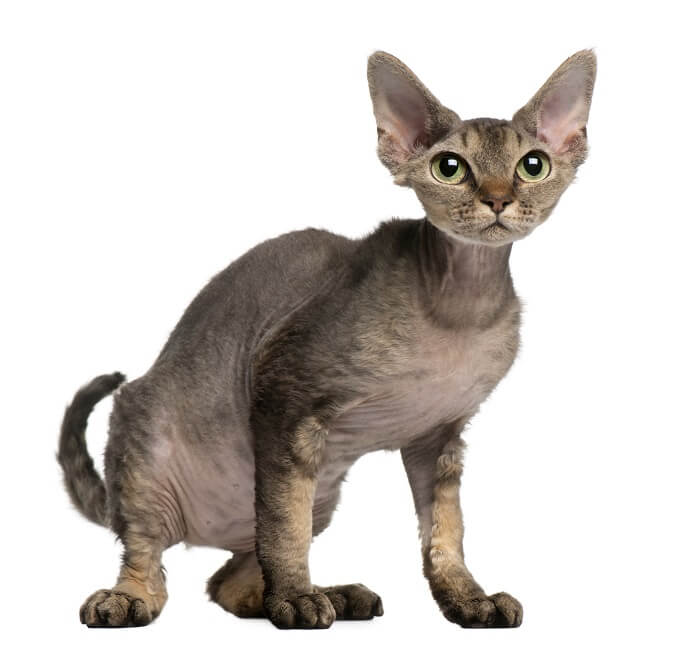
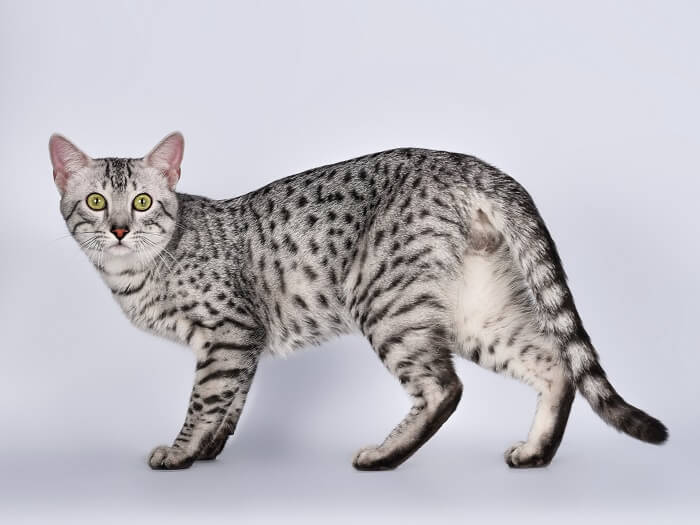
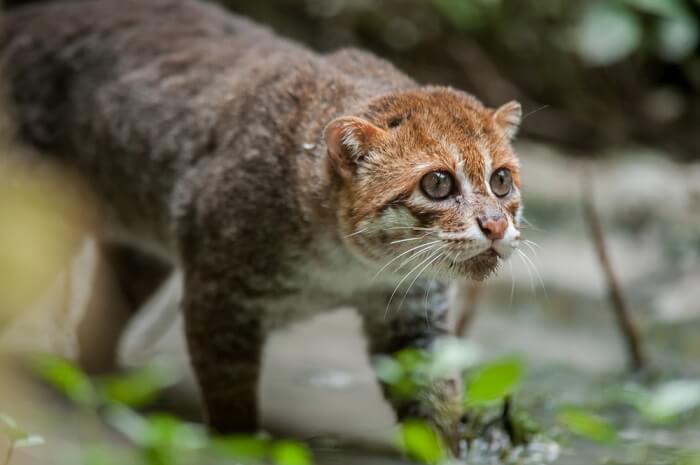
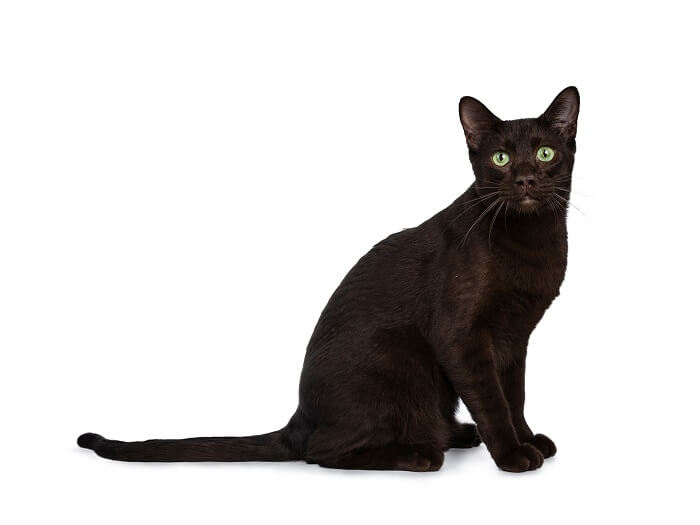
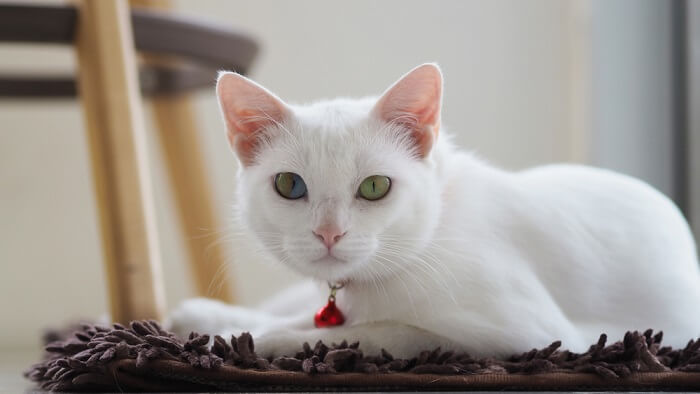
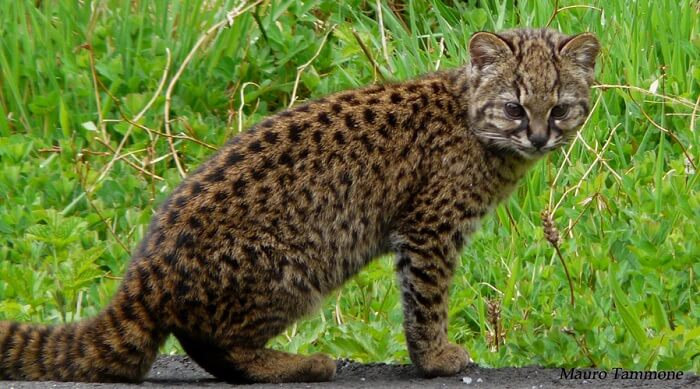
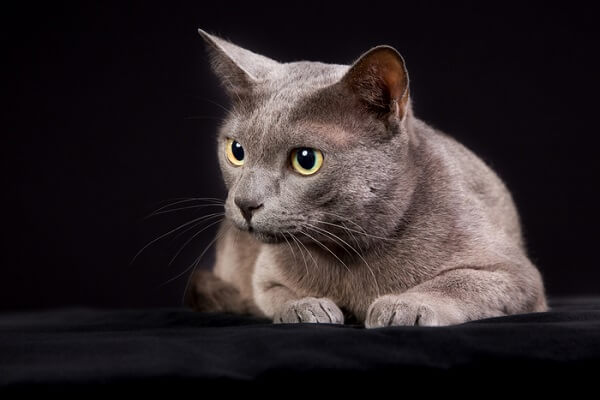
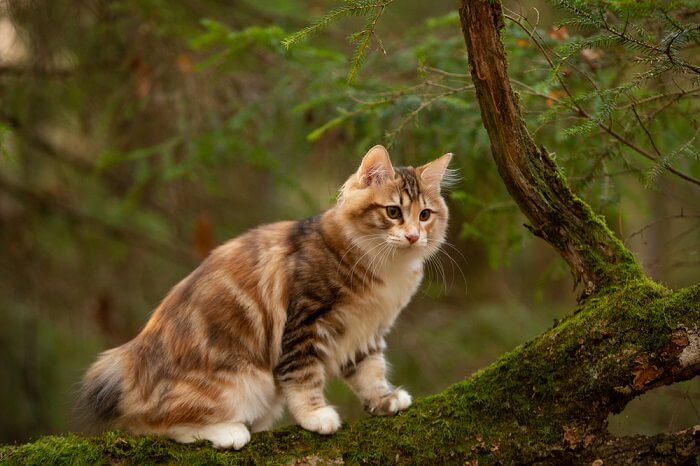
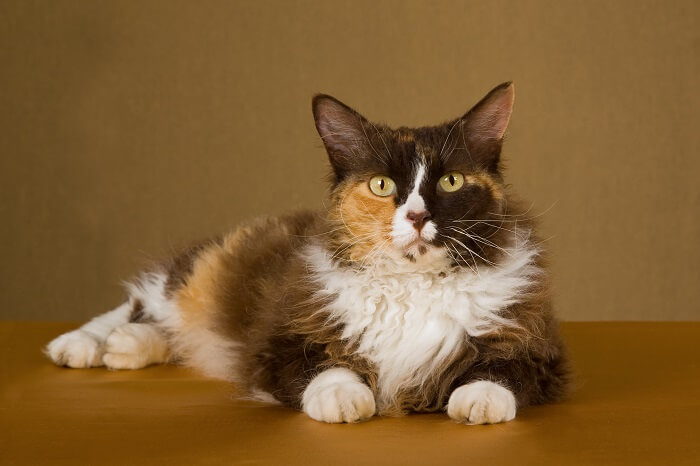
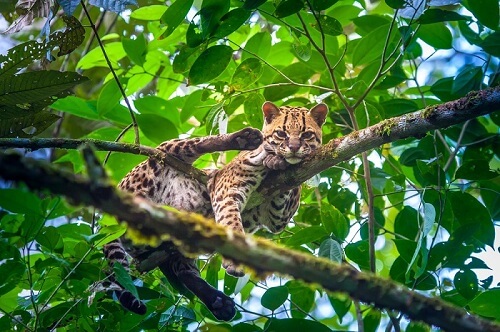
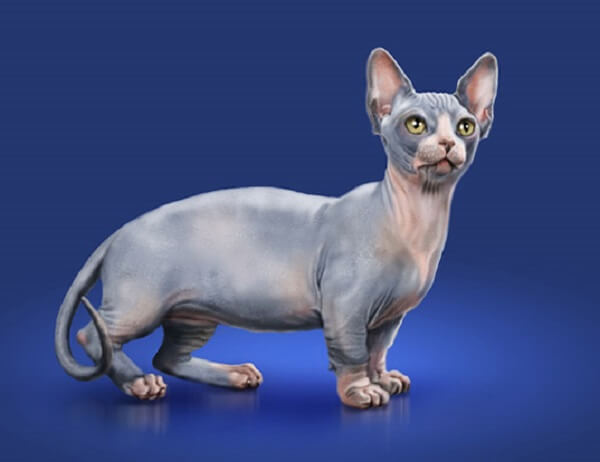
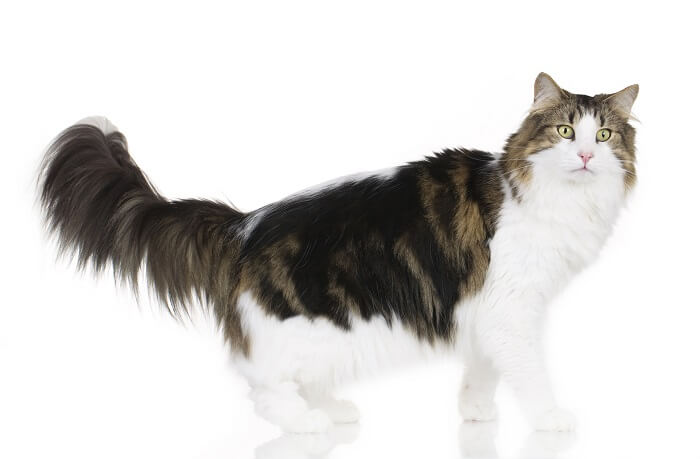
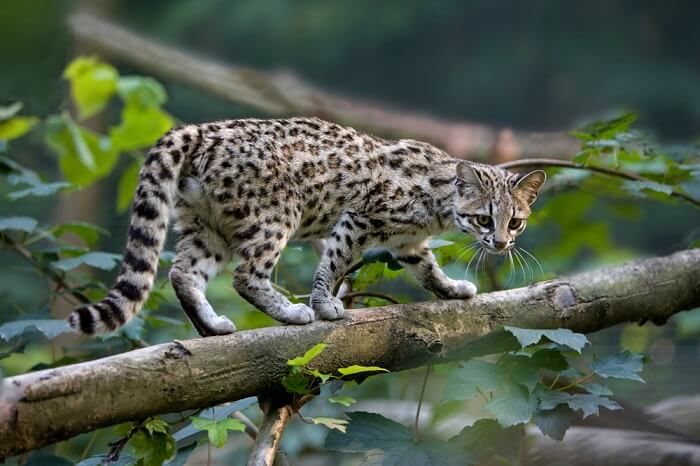
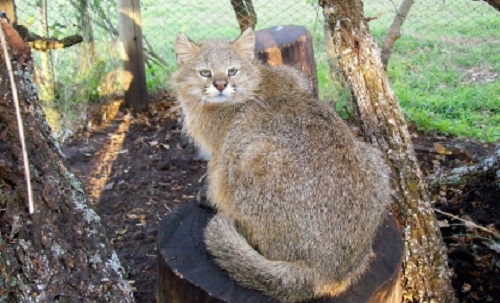
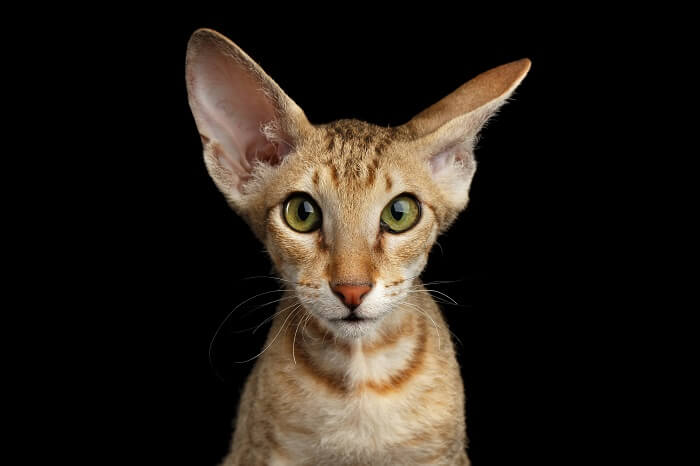
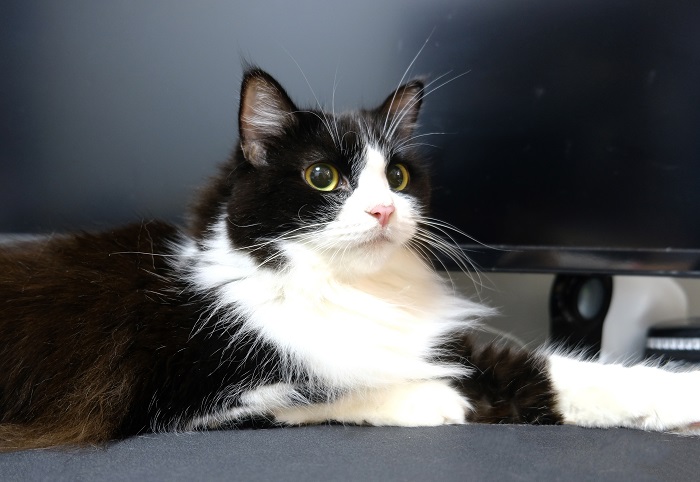
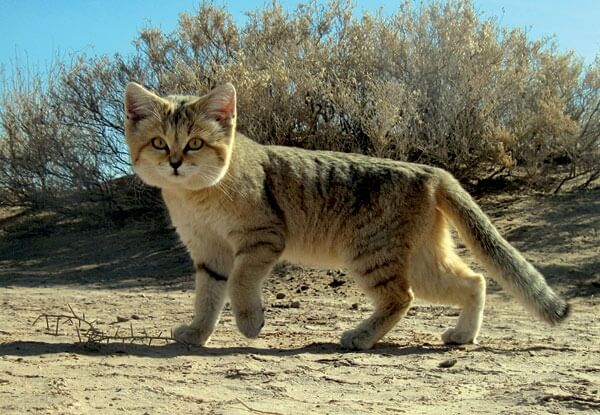
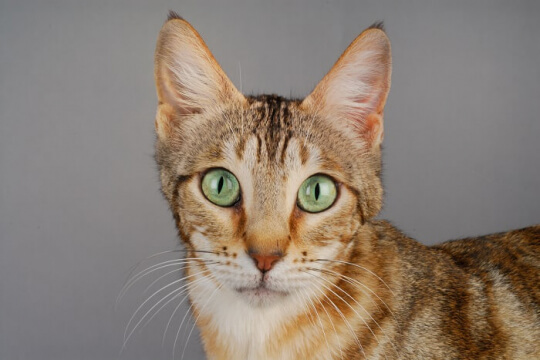
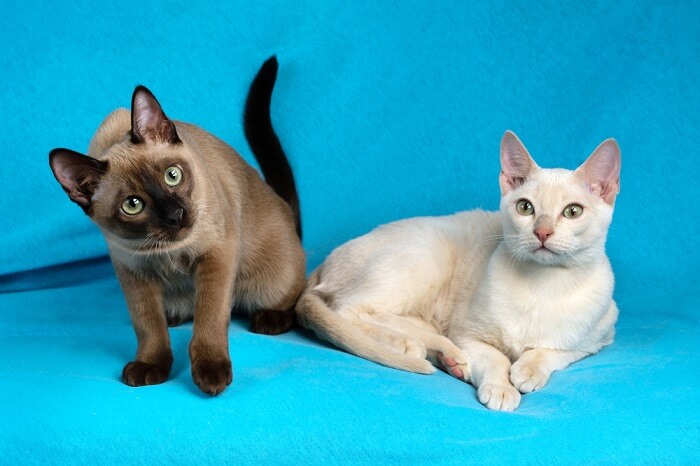
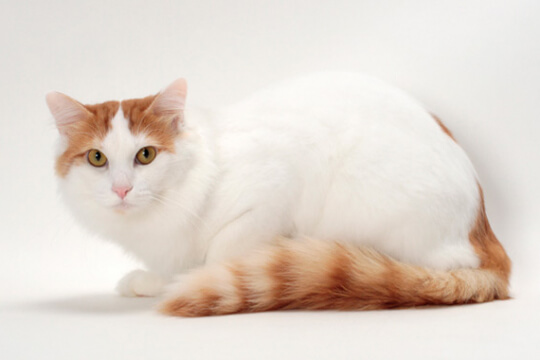
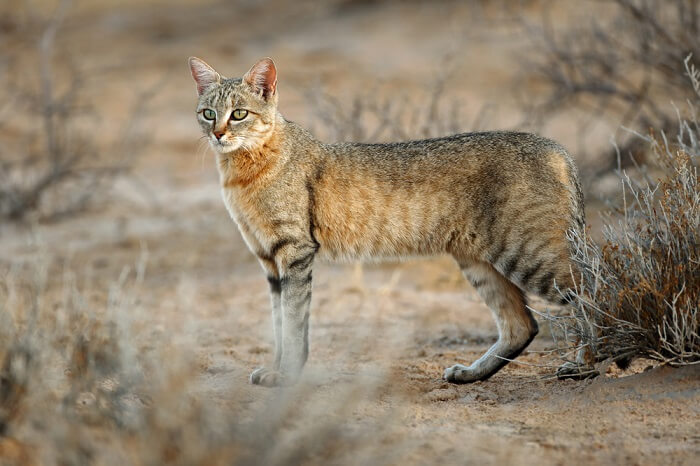
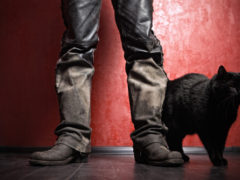


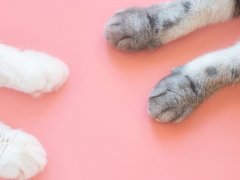
There’s a big difference between cat breed and cat species.
Margay is a cat species of Guatemala, it is not a cat breed. And They are not from the United States.
You need to learn facts by doing some educated research first.
Thank you for commenting and making us aware of this error; we’ll correct it ASAP.
You’ve not corrected the error.
Doing so perpetuates the desire to have a wild animal as a pet
1) KT4 and C are correct, and you still haven’t corrected the error.
2) TICA stands for Tge International Cat Association, not Alliance. You’ll recognize this fact if you look back at your source material.
3) The American bobtail originated in thecUnited States, not the UK; hence its bame.
Hi, thank you for all of these comments. I have corrected the issues mentioned here and the name of the article now reflects a combination of breeds and species, but upon further review, I can see that these aren’t the only errors in this article. It’s on our list for a complete update in the next few months.
If you are going to showcase wild cats, here is a very good reference, at least for the smaller less well known ones. wildcatconservation.org
Thanks for sharing, Dave!
These cats are to cute for me to look at there are awsome and adorible.